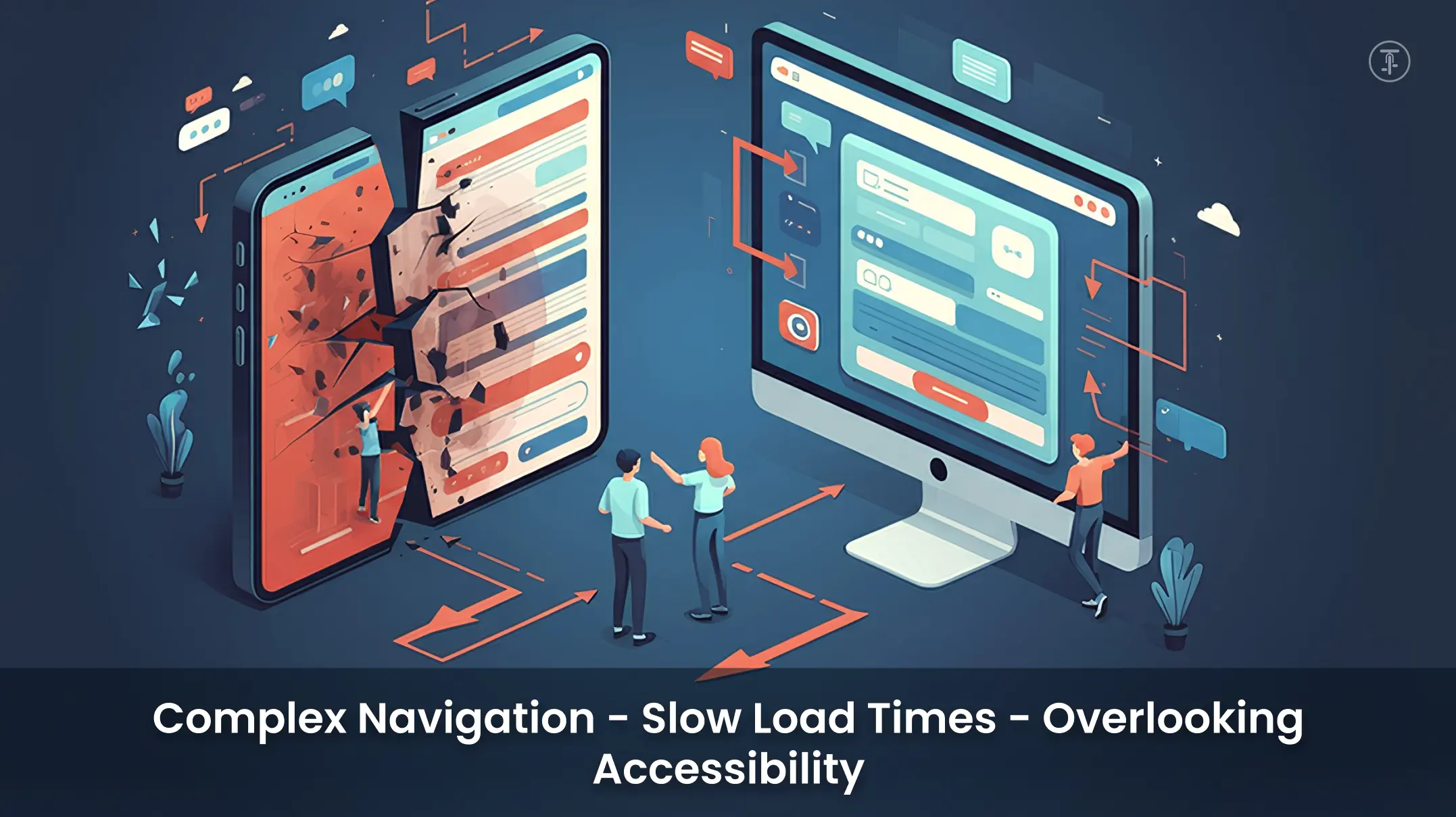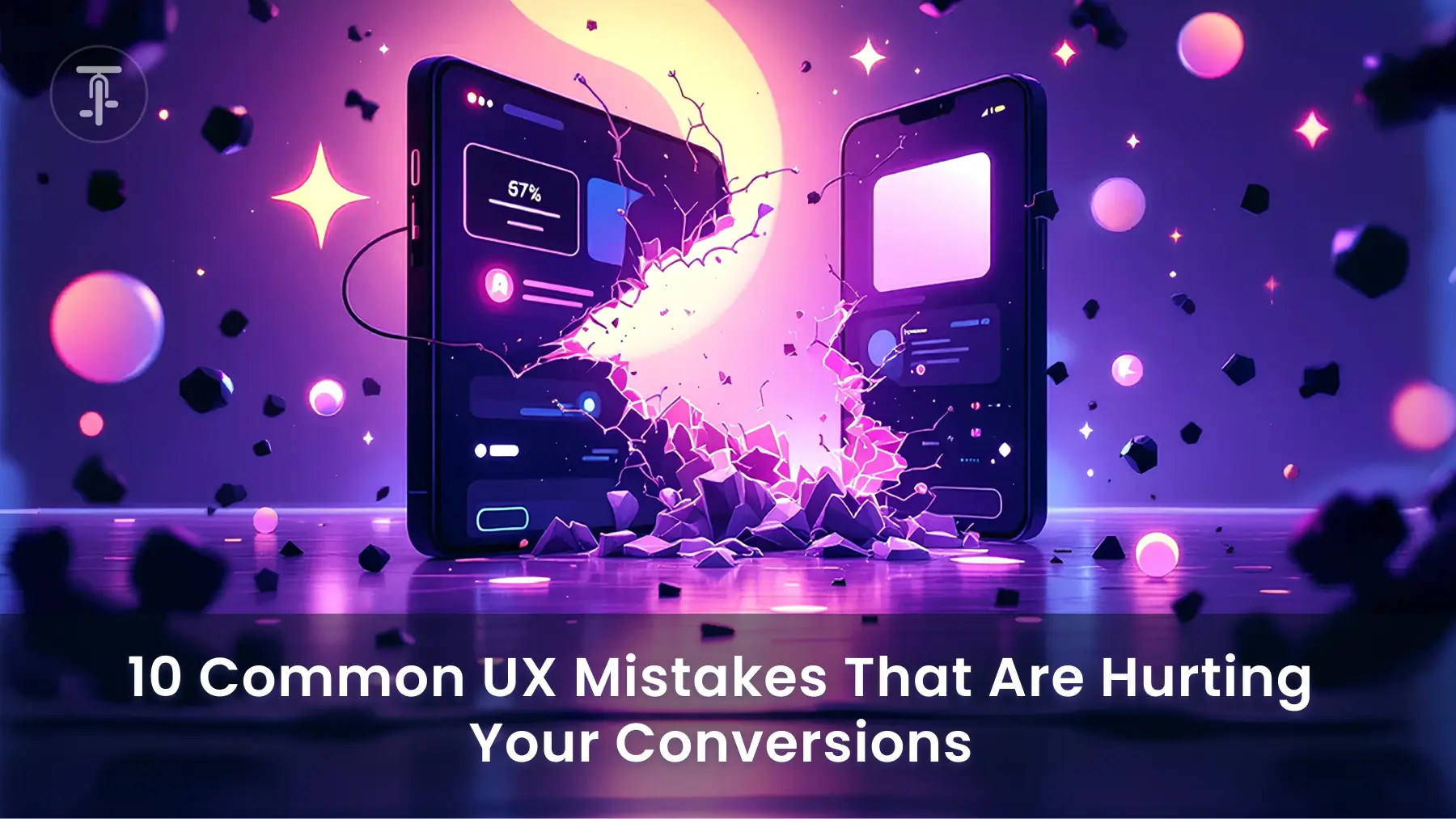Introduction
Did you know that an alarming 88% of online users are less likely to return to a website following a negative user experience? In this day and age of hyper-competition online, User Experience (UX) is no longer just about design; it’s the foundation upon which successful online businesses rise. Whether you’re methodically building the next-gen SaaS platform, crafting a captivating e-commerce front-end, or building an accessible mobile app, ignoring essential UX principles can creepily, albeit persistently, undermine user confidence, radically multiply churn, and eventually destroy your hard-earned momentum.
At Pedals Up, we’ve been privileged to work with many startups and successful businesses, helping them revamp their digital experiences by uncovering and fixing these very same UX pitfalls. We know the subtle things that can make or break a user’s experience of your product. Today, we’d like to share this expertise with you. Let’s dive into the ten most commonly seen UX errors that may be slowing down your conversions, and more importantly, discuss actionable solutions to remedy them.
1. Designing in the Dark: Ignoring User Research
Picture setting off on a trip to a destination unknown with no map or compass. That’s essentially what designing without knowing your users is like. Omitting the very important step of user research naturally results in designs made up of assumptions instead of the real needs and actions of users. This can mean that your product, while aesthetically pleasing to you, entirely fails with your intended audience.
Fix It:
- Conduct user interviews and usability testing early and often. Directly engaging with your users provides invaluable qualitative insights into their pain points, motivations, and expectations.
- Leverage a diverse toolkit of research methods. Employ tools such as surveys to gather broad quantitative data, heatmaps to visualize user interaction patterns, and website analytics to understand user flow and drop-off points.
- Create in-depth user personas. Based on your research, developing fictional portraits of your ideal users keeps user needs at the forefront of all design decisions.
2. Overloading the Interface: The Paradox of Choice
In UX, less is frequently absolutely more. A messy interface, full of too much information, too many choices, and visual clutter, can confuse users. This mental overload prevents them from concentrating on the main tasks and main actions you need them to perform, eventually resulting in frustration and abandonment.
Fix It:
- Prioritize content hierarchy mercilessly. Make sure the most critical information and actions are visually prominent and easy to read.
- Use whitespace intentionally. Don’t undervalue the power of negative space. It gives visual breathing room, enhances readability, and directs the user’s attention.
- Keep Calls-to-Action (CTAs) to a minimum per screen. Too many CTAs induce decision paralysis. Concentrate on the most essential action you desire the user to perform.
3. Bad Mobile Optimization: Alienating a Substantial Chunk
In the mobile-first era, in which more than half of all web traffic comes from mobile devices, not optimizing for mobile is like overlooking half of your target audience. A site or app that isn’t responsive or doesn’t offer a good mobile experience will surely drive users crazy, making them look elsewhere.
Fix It:
- Use responsive design guidelines. Make your design change dynamically across various screen sizes and orientations so that users get a unified experience on any device.
- Completely test across various devices and screen sizes. Something that works beautifully on one device may not be usable at all on another. Testing intensely is important.
- Streamline touch targets and loading times for the mobile specifically. Fingers are less accurate compared to cursors, and smartphone users expect near-instant load speeds.
4. Inconsistent Design Elements: Disintegrating Trust and Clarity
Consider exploring a website in which the buttons appear to differ on each page, the typeface switches erratically, and the color palette seems fractured. This inconsistency leads to feelings of discomfort and a lack of professionalism, and ultimately compromises user trust and increases the complexity of the interface to use.
Fix It:
- Create a detailed style guide. This guide must outline your brand’s visual language, such as typography, color schemes, iconography, and UI component styles.
- Leverage design systems for scalability and consistency. Design systems offer a repository of reusable components and guidelines, which guarantees a consistent experience across your digital products.
- Carefully maintain consistency across all touchpoints and platforms. Whether your website, mobile app, or marketing materials, a consistent visual identity creates brand recognition and user trust.
5. Complex Navigation: Losing Users

If the users cannot quickly find what they need, they will not hang around. An unintuitive and complex navigation scheme is a huge usability barrier that causes frustration and a high bounce rate. Users anticipate well-defined paths and simple discovery.
Fix It:
- Implement intuitive and obvious navigation menus. Utilize clear labeling and organize content logically.
- Add breadcrumbs and a strong search functionality. Breadcrumbs assist in providing users with a sense of where they are on the site, and search enables them to locate particular content in a hurry.
- Keep the number of main menu options to the most important categories. A cluttered main navigation is confusing.
6. Slow Load Times: Losing Users by the Second
In today’s high-speed digital age, speed is everything. Each additional second a page takes to load can have a real-world negative effect on your conversion rates. Studies show that a one-second delay can cut conversions by a whopping 7%. Users don’t have much tolerance for slow websites or apps.
Fix It:
- Optimize images and other assets. Compress images without losing too much quality and use the right file formats.
- Take advantage of browser caching and Content Delivery Networks (CDNs). Caching will enable browsers to load pages for repeat visitors faster, and CDNs will deploy your content to multiple servers so that load times are less for users located geographically away.
- Reduce HTTP requests. Lessen the number of files your page must load by merging CSS and JavaScript files as needed.
7. Overlooking Accessibility: Leaving Out a Significant Audience
Designing without respecting users with disabilities not only restricts your audience but also contradicts the principles of inclusive design. Accessibility isn’t a nice-to-have; it’s an inherent part of good UX.
Fix It:
- Follow Web Content Accessibility Guidelines (WCAG). These guidelines offer a complete set of suggestions for improving web content accessibility.
- Ensure adequate color contrast between text and background. This is particularly important for users with low vision.
- Provide descriptive alt text for all images and make keyboard navigation available. Alt text assists screen reader users in understanding the content of images, while keyboard navigation enables users who cannot use a mouse to navigate your site.
8. Unclear CTAs: Leaving Users in Limbo
Your Calls-to-Action (CTAs) are the directions that steer users toward conversion. If they’re unclear, concealed, or don’t explicitly state a benefit, users won’t know what to do next, and opportunities will be lost.
Fix It:
- Utilize action verbs in language that explicitly states the value of clicking. Instead of “Submit,” use “Download Your Free Ebook.”
- Make CTAs stand out visually and be easy to identify from other content. Utilize contrast colors and ample size.
- Position CTAs strategically in the user flow where they organically fall in line with the intent of the user.
9. Ignoring Microinteractions: Lost Opportunities for Delight
Microinteractions are the subtle animations and feedback indicators that happen when users interact with your interface. These little things, like a button color change on hover or a loading indicator, add to user engagement, give useful feedback, and make the experience feel more responsive and refined. Ignoring them can make your interface feel dead and unresponsive.
Fix It:
- Add considerate hover effects, loading indicators, and transition animations. These are slight visual effects that are good visual feedback, as well as good for making interactions seem smoother.
- Employ microinteractions as a way to direct and contextualize users. A slight animation, for instance, can call attention to a new notification.
10. Overreliance on Trends: Favoring Fashion Over Function
Although it can be tempting to remain up to date with design trends, blindly following them without regard for usability will create a bewildering and ultimately worthless user experience. Something that appears trendy may not be intuitive or user-centric for your desired audience.
Fix It:
- It is better to prioritize user needs and usability over trendy aesthetic standards. Functionality should always be the priority.
- Test design decisions against users. Don’t guess that a hip design will appeal to your users. Test it to make sure.
- There should be a delicate balance between being innovative and adhering to well-established usability patterns. It’s okay to be innovative, but don’t reinvent the wheel when it comes to standard UI patterns.
Conclusion
Staying away from these ten most common UX pitfalls isn’t all about making your digital product look prettier; it’s about creating user satisfaction in its very foundations, trust building, and driving conversions. The good UX disbands friction, navigates the users smoothly toward their destinations, and leaves a positive brand memory.
At Pedals Up, we recognize the complex interplay between great UX and business achievement. Our UX specialists are committed to creating effortless, user-friendly digital experiences that not only look fantastic but also drive real outcomes. We’re here to work with you to uncover and correct any UX limitations in your product, setting the stage for higher engagement, increased conversion rates, and sustainable growth.
Ready to revolutionize your user experience and unlock your product’s maximum potential?
Schedule a free UX consultation with Pedals Up today. Let us explore how we can assist you in pedaling your way towards UX greatness and attaining your business goals.




